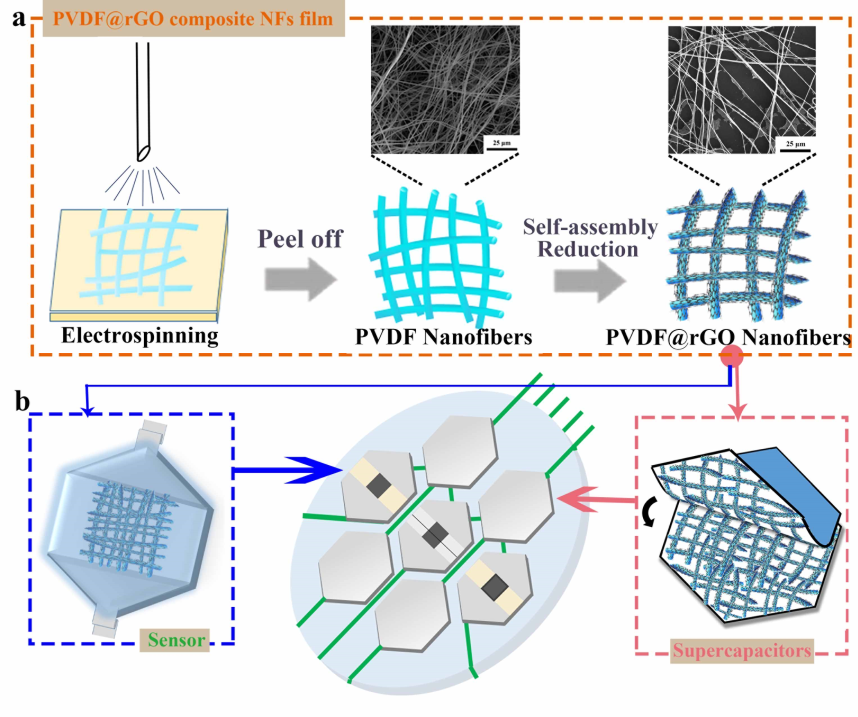As bionics science and robotics science developing, electronic skins, which can mimic human skins and organs to sense physical environment, monitor human activity and personal healthy, are drawing extensive attentions and boosting rapidly in recent years. To mimic the comprehensive properties of human skins, the artificial electronic skins (E-skins) are required to integrate diverse sensing modules that can simultaneously differentiate among various physical stimuli including strain, twist, temperature, light, humidity and the environmental gases. Besides, the power units are also required to be integrated into the multifunctional E-skins to form into self-powered systems, which are especially favorable for next-generation multifunctional E-skins.
Recently, Prof. SHEN Guozhen’s Group in Institute of Semiconductors, Chinese Academy of Sciences, with their collaborators in University of Electronic Science and Technology of China, Chinese PLA General Hospital and University of Science and Technology Beijing, have manufactured an All rGO-on-PVDF-nanofibers based self-powered electronic skins.
Based on their previous studies on physical and chemical properties of graphene and advanced engineering of composite graphene materials (Nano Energy, 2016, 23, 7), four kinds of planar devices namely micro-supercapacitors, pressure sensor, photodetector and gas sensor were modularly manufactured, all with graphene oxide encapsulated PVDF nanofibers as the functional materials. They were integrated into a single pixel to form a self-powered multifunctional electronic skin system, to detect the environmental conditions and physiological signs of health.
They also found that the flexible supercapacitor modules, with an energy density of 0.071 mWh/cm3, could provide stable current output for the system; the pressure sensor could sense external touch, wrist pulse, throat sound and heartbeat; the photodetector could sense the brightness of the environment; and the gas sensor can detect the concentration of certain toxic organic gases.
The technology developed in this work is quite simple and efficient, which can in principle be scaled-up to fabricate more compact and higher performance e-skins for applications in wearable electronics or bionics field.
This work entitled “All rGO-on-PVDF-nanofibers based self-powered electronic skins” was recently published in Nano Energy (2017, 35, 121). It was supported by the National Natural Science Foundation of China (Nos. 61625404, 61504136), Beijing Natural Science Foundation (No. 4162062) and the Key Research Program of Frontier Sciences, CAS (No. QYZDY-SSW-JWC004).

Figure 1. All rGO-on-PVDF-nanofibers based self-powered electronic skins (Image by Prof. SHEN Guozhen).
Key words: electronic skins; graphene; sensor; microsupercapacitor; photodetector; wearable electronics
Contact:
Prof. SHEN Guozhen
E-mail: gzshen@semi.ac.cn,
Group Website: http://www.escience.cn/people/gzshen
Institute of Semiconductors, CAS (http://english.semi.cas.cn/)
